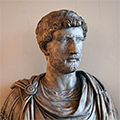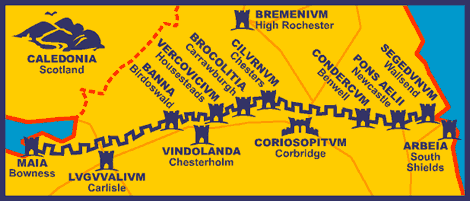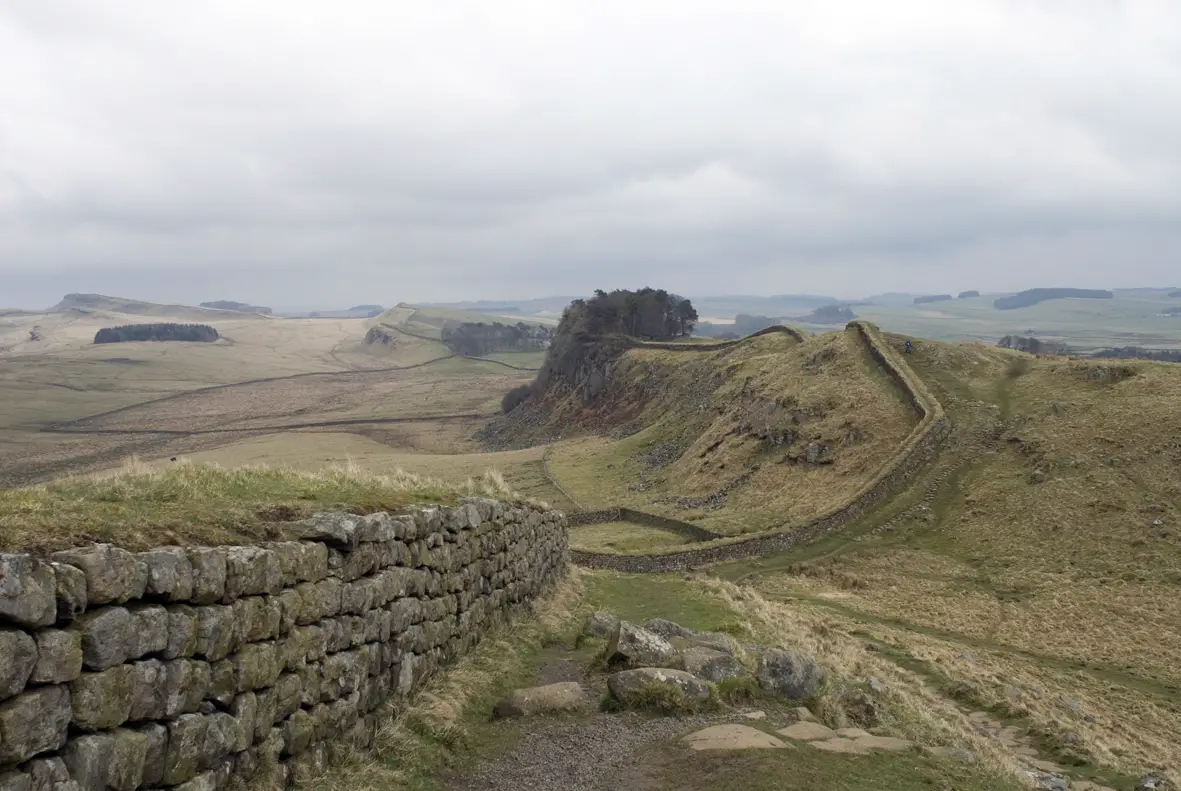Hadrian's Wall
Hadrian's Wall served as the northern boundary of the Roman Empire in Britain. Roman soldiers had arrived in Britain for the first time in 55 B.C., on an expedition led by Julius Caesar. They came back the following year and made of a foray into the hinterlands but ultimately left again. The emperor Claudius sent many more troops in A.D. 43, and the Roman conquest of Britain was largely successful. The lands conquered included all of what is now England and Wales and some of what is now Scotland. After a period of mixed results in the north, an area that the Romans called Caledonia, the Roman conquest ground to a halt. This part of the British Isles had long been home to the Picts, who had struggled against Celtic forces in the years before Rome arrived. Even after the devastating Roman victory at Mons Graupius in 83, the Caledonian force refused to submit, instead melting into the foggy, misty highlands, frustrating Roman might again. 
The Roman Emperor Hadrian visited Britain, at the invitation of Governor Quintus Falco, in 122. 
After a tour of the countryside, Hadrian decreed that his forces should build a wall the width of northern England, from the River Tyne to the Solway Firth, a distance of 80 Roman miles, or nearly 73 miles. The wall, which took six years to construct, served both as a defensive fortification and, through the use of the gates spaced periodically along, as a customs facility. The wall was not the same consistency throughout. In the west, the wall was 11 feet high and 20 feet wide and made mainly of turf. In the east, the wall was 15 feet high and 10 feet wide and made of stone.  At regular intervals along the wall were milecastles, about a Roman mile apart. Each of these milecastles contained a garrison that housed a few dozen men. In between each pair of milecastles were two towers, also staffed by soldiers on patrol. South of the Wall was a large earthen rampart-and-ditch combination called the Vallum. This earthwork, with its ditch that was 20 feet across and 15 feet deep, was constructed during several decades, at the direction of Agricola and Hadrian and a later emperor named Severus. 
Archaeologists still do not agree on the purpose of the Vallum. One theory is that it was the southern boundary of a military zone that was fronted on the north by the Wall itself. Another theory is that it was a construction trench for a road that was never built. There was a road south of the Wall, the Stangate, and it was a communication road. Also confronting any northern raiders would be a series of ditches and berms on the northern side of the wall and a number of forts staffed with Roman troops on the southern side of the wall. About 10,000 soldiers in all filled the 14 forts along the wall, including cavalry units of 1,000 troops stationed at either end. Hadrian's Wall was largely successful at stopping the raiding of Roman territory by northerners, for a time. |
|




